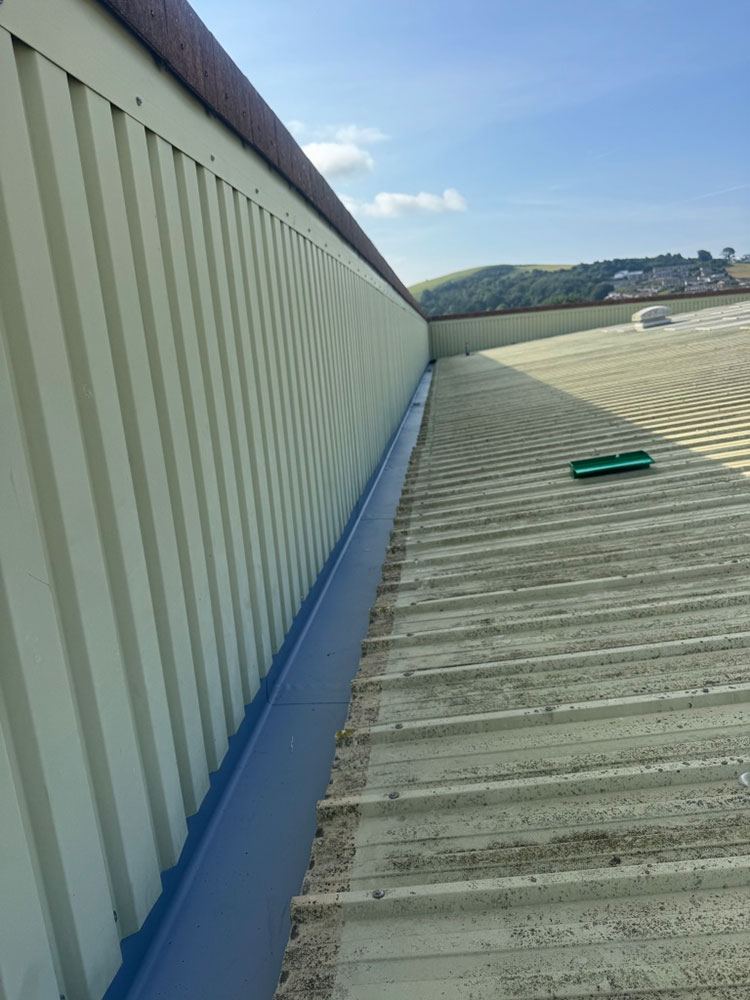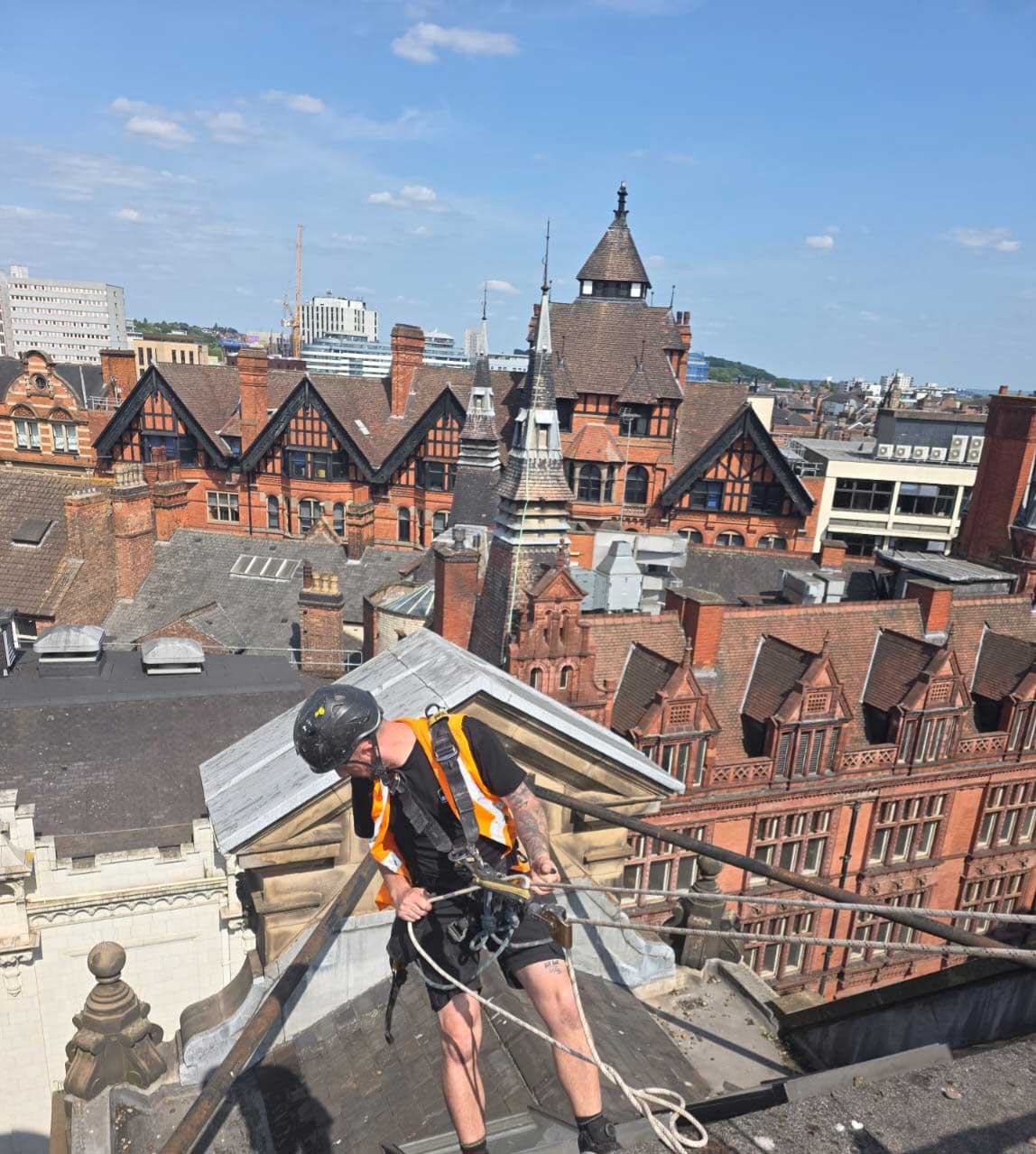
With environmental performance now a core consideration in property management and corporate responsibility, roofing is no longer simply about keeping the rain out. It plays a key role in achieving energy targets, lowering emissions, and future-proofing commercial assets. Fortunately, modern roofing systems offer practical ways to support green initiatives—without compromising durability or function.
This article explores roofing choices that contribute to sustainability through reflective surfaces, recyclable materials, and solar panel compatibility—three strategies that can help commercial buildings meet environmental goals while improving operational performance.
1. Reflective Roofing Surfaces: Combat Heat, Lower Energy Use
One of the simplest and most effective ways to reduce a building’s environmental footprint is to limit heat absorption. Traditional dark roofs absorb sunlight, raising surface temperatures and increasing the need for indoor cooling—particularly problematic in retail, logistics, and manufacturing spaces with wide roof spans.
The Role of Reflective Roofs
Reflective or “cool” roofing materials are designed to reflect more sunlight and absorb less heat than standard systems. These surfaces reduce the urban heat island effect, improve indoor comfort, and reduce air conditioning loads.
Examples of reflective roofing options:
-
TPO Membranes: Typically white or light grey, they reflect a high percentage of solar radiation and remain stable over time.
-
PVC Roofing: Offers excellent reflectivity and long-term UV resistance, commonly used on flat or low-slope commercial roofs.
-
Cool Roof Coatings: These can be applied to existing roofs to increase solar reflectance, extending lifespan while improving energy performance.
Environmental Benefits
-
Lower internal temperatures = reduced energy demand for cooling
-
Reduced HVAC load = extended equipment lifespan
-
Contributes to BREEAM credits under the “Energy” and “Health & Wellbeing” categories
Reflective roofing is especially valuable in densely built-up areas or buildings with large, exposed roof decks.
2. Recyclability and Sustainable Materials: Reducing Waste and Impact
Green building isn’t just about saving energy—it’s also about choosing materials that are responsibly produced and easily reused or recycled at end of life.
Roofing Materials with Low Environmental Impact
Many modern membranes and systems are now made with sustainability in mind. These materials either contain recycled content, are themselves recyclable, or are manufactured with minimal emissions.
Notable examples:
-
EPDM (Ethylene Propylene Diene Monomer): A durable rubber membrane that’s fully recyclable and contains no chlorine or plasticisers. Often used in long-span commercial roofs.
-
TPO (Thermoplastic Polyolefin): Another recyclable option, produced with fewer harmful chemicals and suited to green-certified buildings.
-
Metal Roofing (e.g. steel or aluminium panels): Metal roofs often include a high percentage of recycled content and can be fully recycled after decades of use.
-
Green Roof Systems: Layers of vegetation atop waterproofing membranes. These not only support biodiversity but reduce rainwater runoff and provide natural insulation.
Installation Practices Matter Too
-
Hot-air welding (used in TPO/PVC) avoids adhesives with high VOCs
-
Dry-fix systems reduce reliance on sealants and solvents
-
Modular panels can be removed and reused during refurbishment
Choosing a roof system with environmental credentials supports long-term sustainability goals and demonstrates measurable commitment to responsible building practices.
3. Solar Panel Compatibility: Turning the Roof into a Power Source
One of the most direct ways to transform a roof into an active environmental asset is to install solar photovoltaic (PV) panels. With the growing push for net-zero carbon strategies, rooftop solar generation is a practical step toward energy independence.
Roofing Considerations for Solar Readiness
Before installing solar panels, the roof must be compatible—structurally and materially—with the added load and layout requirements.
Key compatibility factors:
-
Flat Roofs: Often ideal for solar arrays due to their expansive area and easy access for installation and maintenance.
-
Membrane Durability: EPDM, TPO, and PVC membranes hold up well under mounting systems and resist degradation from shading and localised heat.
-
Fixing Systems: Ballasted or non-penetrative systems are preferred to avoid breaching the waterproof layer. Many modern roofs can be prepped for this.
-
Load Bearing Capacity: Assessments are needed to confirm whether the structure can support the additional weight of panels, brackets, and ballast.
Additional Benefits of a Solar-Compatible Roof
-
Lower electricity bills
-
Reduced reliance on grid-supplied power
-
Supports ESG reporting and environmental certifications
-
Makes use of underutilised roof space to deliver measurable return
Roofs designed with solar in mind from the outset often last longer, because the shading provided by panels reduces UV degradation of the surface beneath.
Bonus: Green Roofs for Biodiversity and Stormwater Control
While not suitable for every commercial building, green roofs deserve mention. These systems involve growing vegetation directly on the roof surface, over a series of waterproofing and drainage layers.
Environmental advantages:
-
Absorb rainwater, reducing pressure on urban drainage networks
-
Improve building insulation, especially in summer
-
Provide habitats for birds and insects, enhancing biodiversity
-
Improve air quality and reduce noise levels
Extensive green roofs (low-maintenance plantings) are more suitable for industrial and warehouse applications than intensive ones (with larger plants or trees).
Maintenance and Lifecycle Benefits
A sustainable roofing system is not just about installation—it’s about how well it performs over time with minimal intervention.
Green roofing solutions tend to share these characteristics:
-
Longer Lifespan: Reflective and UV-resistant membranes last longer and degrade more slowly.
-
Lower Maintenance Demand: Fewer chemical treatments, less cleaning, and better weather resistance reduce annual upkeep.
-
Adaptability: Modern systems are modular and easy to upgrade, making them ideal for evolving environmental standards or future roof-mounted systems.
A roof that supports green initiatives is also more predictable to manage and budget for—an important consideration in long-term asset planning.
Conclusion
The roof of a commercial building is no longer a passive shell—it can be a powerful ally in meeting sustainability targets. Whether through reflective surfaces, recyclable materials, or renewable energy generation, roofing systems today offer tangible ways to reduce environmental impact while improving building performance.
For facilities managers, sustainability officers, and developers alike, the message is clear: the right roof doesn’t just protect your building—it protects your future.









